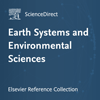Ver ítem
- xmlui.general.dspace_homeCentros Regionales y EEAsCentro Regional Patagonia SurEEA Santa CruzPartes de librosxmlui.ArtifactBrowser.ItemViewer.trail
- Inicio
- Centros Regionales y EEAs
- Centro Regional Patagonia Sur
- EEA Santa Cruz
- Partes de libros
- Ver ítem
Soil erosion rates and nutrient loss in rangelands of Southern Patagonia
Resumen
Soil erosion in rangelands is the main driver of desertification as a result of severe drought events and overgrazing reducing potential land productivity. The objectives of this chapter are to provide an overview of soil erosion as it relates to ecosystem services and to determine soil erosion rates from exposed roots of four shrub and dwarf-shrub species in nine sites of Southern Patagonia rangelands (Santa Cruz province, Argentina) as a case study. We
[ver mas...]
Soil erosion in rangelands is the main driver of desertification as a result of severe drought events and overgrazing reducing potential land productivity. The objectives of this chapter are to provide an overview of soil erosion as it relates to ecosystem services and to determine soil erosion rates from exposed roots of four shrub and dwarf-shrub species in nine sites of Southern Patagonia rangelands (Santa Cruz province, Argentina) as a case study. We highlight that soil protection is critical to sustain the capacity of rangeland ecosystems to supply provisioning (lamb and cattle meat, sheep wool) supporting (nutrient cycling, biodiversity, habitat) and regulating (carbon fixation, water flow regulation) ecosystem services for human wellbeing. We used a dendrogeomorphological method to determine soil erosion rates against datable exposed roots. Also, in each site soil samples were collected from nine randomly selected points in nondegraded patches to provide reference points from which to calculate loss of soil organic carbon and nutrients from erosion. The soil erosion rate in the degraded areas characterized by dwarf shrubs and shrubs with exposed roots was significantly different between sites and ranged from 1.6 to 4.1 mm year−1. Soil mass loss rate ranged from 12.7 to 32.0 Mg ha−1 year−1 and soil carbon loss fluctuated from 85.3 to 250.1 kg C ha−1 year−1. The main soil nutrient depleted during erosion processes was nitrogen (mean sites value of 17.9 kg N ha−1 year−1) followed by potassium (mean of 9.2 kg K ha−1 year−1) followed by phosphorus (mean of 0.6 kg P ha−1 year−1). These results highlight the need for an early warning system by a soil erosion monitoring entity to prevent soil
loss and prescribe sustainable management practices to maintain rangelands in an ecologically healthy state to conserve ecological functions and ecosystem service provision.
[Cerrar]

Autor
Peri, Pablo Luis;
Lasagno, Romina Gisele;
Chartier, Marcelo Pablo;
Roig Junent, Fidel Alejandro;
Rosas, Yamina Micaela;
Martinez Pastur, Guillermo José;
Fuente
The Encyclopedia of Conservation - Reference Module in Earth Systems and Environmental Sciences, Elsevier, Amsterdam, Netherlands. p. 1-8.
Fecha
2021-11-25
Editorial
Elsevier
ISBN
978-012-40954-8-9
Formato
pdf
Tipo de documento
parte de libro
Palabras Claves
Derechos de acceso
Restringido
 Excepto donde se diga explicitamente, este item se publica bajo la siguiente descripción: Creative Commons Attribution-NonCommercial-ShareAlike 2.5 Unported (CC BY-NC-SA 2.5)
Excepto donde se diga explicitamente, este item se publica bajo la siguiente descripción: Creative Commons Attribution-NonCommercial-ShareAlike 2.5 Unported (CC BY-NC-SA 2.5)

